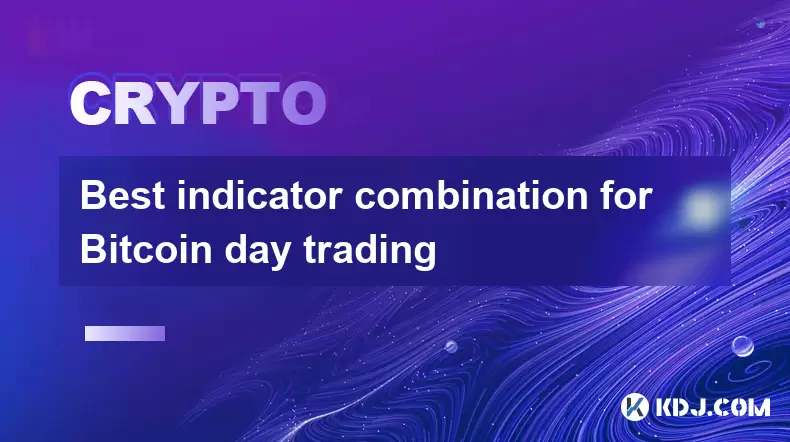-
 Bitcoin
Bitcoin $118,209.3536
1.16% -
 Ethereum
Ethereum $3,151.7546
5.98% -
 XRP
XRP $2.9277
2.35% -
 Tether USDt
Tether USDt $1.0000
0.00% -
 BNB
BNB $689.7099
1.26% -
 Solana
Solana $163.4270
1.91% -
 USDC
USDC $1.0000
0.02% -
 Dogecoin
Dogecoin $0.1983
3.74% -
 TRON
TRON $0.3008
0.51% -
 Cardano
Cardano $0.7435
2.86% -
 Hyperliquid
Hyperliquid $47.6547
-0.48% -
 Stellar
Stellar $0.4625
2.79% -
 Sui
Sui $3.9921
2.71% -
 Chainlink
Chainlink $16.0608
4.23% -
 Hedera
Hedera $0.2348
1.56% -
 Bitcoin Cash
Bitcoin Cash $496.6985
1.25% -
 Avalanche
Avalanche $21.9038
5.41% -
 UNUS SED LEO
UNUS SED LEO $8.8356
-1.88% -
 Shiba Inu
Shiba Inu $0.0...01364
5.31% -
 Toncoin
Toncoin $3.1102
4.35% -
 Litecoin
Litecoin $95.9756
3.59% -
 Polkadot
Polkadot $4.0925
5.78% -
 Monero
Monero $333.7622
-1.44% -
 Uniswap
Uniswap $9.1968
2.25% -
 Bitget Token
Bitget Token $4.6378
6.23% -
 Pepe
Pepe $0.0...01282
6.77% -
 Dai
Dai $1.0002
0.03% -
 Ethena USDe
Ethena USDe $1.0005
0.00% -
 Aave
Aave $329.9143
4.49% -
 Bittensor
Bittensor $441.4995
6.89%
Best indicator combination for Bitcoin day trading
Bitcoin day traders rely on technical indicators like moving averages, RSI, Bollinger Bands, and Volume Profile to analyze trends, momentum, volatility, and market sentiment for better decision-making.
Jul 16, 2025 at 01:49 am

Understanding the Importance of Indicators in Bitcoin Day Trading
Bitcoin day trading requires a high level of precision and real-time decision-making. Traders often rely on technical indicators to analyze price movements and make informed decisions. Technical indicators are mathematical calculations based on historical price, volume, or open interest data, which help traders anticipate future price trends. For day traders dealing with Bitcoin's volatile market, combining multiple indicators can provide more accurate signals than relying on a single tool.
It is crucial for traders to understand that no indicator guarantees 100% accuracy. However, when certain indicators are combined strategically, they can enhance the probability of successful trades by filtering out false signals and confirming trend strength.
Moving Averages: The Foundation of Trend Analysis
One of the most widely used tools among Bitcoin traders is the Moving Average (MA). This indicator smooths out price data over a specific time period, helping traders identify the direction of the trend. The two most common types are the Simple Moving Average (SMA) and the Exponential Moving Average (EMA).
- SMA gives equal weight to all prices in the selected period
- EMA places more emphasis on recent price action
A popular strategy involves using a short-term EMA (e.g., 9-period) and a longer-term EMA (e.g., 21-period) together. When the short-term crosses above the long-term, it may signal an uptrend; conversely, a cross below might indicate a downtrend. These crossovers are known as the "Golden Cross" and "Death Cross," respectively and are especially relevant in Bitcoin trading due to its pronounced trend behavior.
Relative Strength Index (RSI): Measuring Overbought and Oversold Conditions
The Relative Strength Index (RSI) is a momentum oscillator that measures the speed and change of price movements. It ranges from 0 to 100 and is primarily used to identify overbought (above 70) or oversold (below 30) conditions in the market. While these levels don’t always result in immediate reversals, they can serve as warnings that a correction may be imminent.
For Bitcoin day traders, RSI becomes particularly useful during sideways or consolidation phases. When price is rising but RSI fails to reach new highs, this divergence can indicate weakening momentum and a potential reversal. Conversely, if price is falling while RSI begins to rise, it could suggest hidden strength building up beneath the surface.
Bollinger Bands: Gauging Volatility and Price Extremes
Bollinger Bands consist of a middle band (usually a 20-period SMA) and two outer bands set at standard deviations away from the middle line. These bands expand and contract based on volatility. During periods of low volatility, the bands narrow; during high volatility, they widen.
In Bitcoin trading, Bollinger Bands can help identify potential breakouts or pullbacks. When price touches or moves outside the upper band, it might signal overextension to the upside, while touching the lower band could indicate extreme bearish pressure. However, traders should not base decisions solely on Bollinger Band touches. Instead, they should look for confluence with other indicators like RSI or moving averages.
Volume Profile: Understanding Market Sentiment
Volume Profile is a powerful yet underutilized tool in Bitcoin day trading. It shows the amount of volume traded at different price levels over a defined period. By analyzing where the majority of trading activity has occurred, traders can determine key support and resistance zones, also known as Point of Control (POC) and Value Areas.
When Bitcoin’s price approaches a high-volume area, it often leads to either a bounce or a breakout depending on the strength of buyers or sellers. Integrating Volume Profile with other indicators like moving averages or RSI helps traders filter out noise and focus on areas where institutional activity is likely concentrated.
Putting It All Together: Combining Indicators Effectively
Combining indicators effectively requires understanding how each contributes to your overall strategy. Here’s a breakdown of how you might layer them:
- Use moving averages to establish the trend direction
- Apply RSI to assess momentum and possible reversal points
- Overlay Bollinger Bands to evaluate volatility and extreme price levels
- Incorporate Volume Profile to validate key levels and sentiment
This combination allows traders to see a multi-dimensional picture of the market. For example, if Bitcoin is trending upward via EMAs, RSI is not yet in overbought territory, price is near the lower Bollinger Band, and volume is concentrated just above current price, it may present a compelling buying opportunity.
Frequently Asked Questions (FAQ)
What is the best timeframe for using these indicators in Bitcoin day trading?
Most day traders use timeframes ranging from 5 minutes to 1 hour. Shorter timeframes like 5-minute charts allow for quick entries and exits, while 1-hour charts offer broader context. Adjust settings accordingly—short-term traders may prefer faster EMAs (like 9 and 21), whereas longer-term intraday traders might opt for 50 and 200 SMAs.
Can I use these indicators for altcoins too?
Yes, many of these indicators are applicable across cryptocurrencies. However, Bitcoin tends to have more reliable patterns due to higher liquidity and volume. Altcoins may produce more false signals, so extra caution and confirmation methods are recommended.
Is there a risk of overloading the chart with too many indicators?
Absolutely. Too many indicators can lead to confusion and conflicting signals. Stick to a core set that aligns with your strategy. Focus on clarity and simplicity rather than complexity.
How do I know if an indicator is giving a false signal?
False signals are common, especially in volatile markets like Bitcoin. Always look for confluence between indicators and avoid acting on a single signal alone. Also, backtesting your strategy on historical data can help identify how often false signals occur and how to filter them effectively.
Disclaimer:info@kdj.com
The information provided is not trading advice. kdj.com does not assume any responsibility for any investments made based on the information provided in this article. Cryptocurrencies are highly volatile and it is highly recommended that you invest with caution after thorough research!
If you believe that the content used on this website infringes your copyright, please contact us immediately (info@kdj.com) and we will delete it promptly.
- Eclipse Airdrop and Token Supply: Navigating the Crypto Landscape
- 2025-07-16 18:50:13
- Solana Price, Zebec Network, and Remittix: Decoding the Crypto Signals
- 2025-07-16 18:30:13
- Crypto Picks & Altcoin Breakout: August's Hottest Trends
- 2025-07-16 18:30:13
- XLM Stellar Analyst Prediction: Is a $10 Target on the Horizon?
- 2025-07-16 19:10:12
- Dubai, Ripple, and Tokenization: A New Era for Real Estate
- 2025-07-16 18:50:13
- Unilabs Finance (UNIL): Primed for a Massive 2025 Launch?
- 2025-07-16 19:15:12
Related knowledge

What is the significance of the 21-week EMA in a Bitcoin bull market?
Jul 10,2025 at 06:56pm
Understanding the 21-Week EMA in Cryptocurrency AnalysisThe 21-week Exponential Moving Average (EMA) is a technical indicator widely used by traders a...

How to identify a volatility contraction pattern on Bitcoin using indicators?
Jul 07,2025 at 07:28am
What is a Volatility Contraction Pattern in Bitcoin Trading?A volatility contraction pattern refers to a phase where the price movement of an asset, s...

Do indicators work better on a logarithmic or linear scale for Bitcoin's long-term chart?
Jul 08,2025 at 01:42pm
Understanding Chart Scales in Cryptocurrency TradingIn cryptocurrency trading, particularly for analyzing Bitcoin's long-term trends, chart scales pla...

What is the Woodies CCI indicator and can it be used for Bitcoin?
Jul 04,2025 at 05:14pm
Understanding the Woodies CCI IndicatorThe Woodies CCI indicator is a variation of the traditional Commodity Channel Index (CCI), which was originally...

How to use indicators to trade the opening range breakout for Bitcoin CME futures?
Jul 05,2025 at 07:35pm
What Is the Opening Range Breakout Strategy?The opening range breakout (ORB) strategy is a popular trading technique used in both traditional markets ...

How to use the Relative Vigor Index (RVI) for Bitcoin trading?
Jul 07,2025 at 02:00pm
Understanding the Relative Vigor Index (RVI)The Relative Vigor Index (RVI) is a technical analysis tool used to assess the strength of price movements...

What is the significance of the 21-week EMA in a Bitcoin bull market?
Jul 10,2025 at 06:56pm
Understanding the 21-Week EMA in Cryptocurrency AnalysisThe 21-week Exponential Moving Average (EMA) is a technical indicator widely used by traders a...

How to identify a volatility contraction pattern on Bitcoin using indicators?
Jul 07,2025 at 07:28am
What is a Volatility Contraction Pattern in Bitcoin Trading?A volatility contraction pattern refers to a phase where the price movement of an asset, s...

Do indicators work better on a logarithmic or linear scale for Bitcoin's long-term chart?
Jul 08,2025 at 01:42pm
Understanding Chart Scales in Cryptocurrency TradingIn cryptocurrency trading, particularly for analyzing Bitcoin's long-term trends, chart scales pla...

What is the Woodies CCI indicator and can it be used for Bitcoin?
Jul 04,2025 at 05:14pm
Understanding the Woodies CCI IndicatorThe Woodies CCI indicator is a variation of the traditional Commodity Channel Index (CCI), which was originally...

How to use indicators to trade the opening range breakout for Bitcoin CME futures?
Jul 05,2025 at 07:35pm
What Is the Opening Range Breakout Strategy?The opening range breakout (ORB) strategy is a popular trading technique used in both traditional markets ...

How to use the Relative Vigor Index (RVI) for Bitcoin trading?
Jul 07,2025 at 02:00pm
Understanding the Relative Vigor Index (RVI)The Relative Vigor Index (RVI) is a technical analysis tool used to assess the strength of price movements...
See all articles

























































































